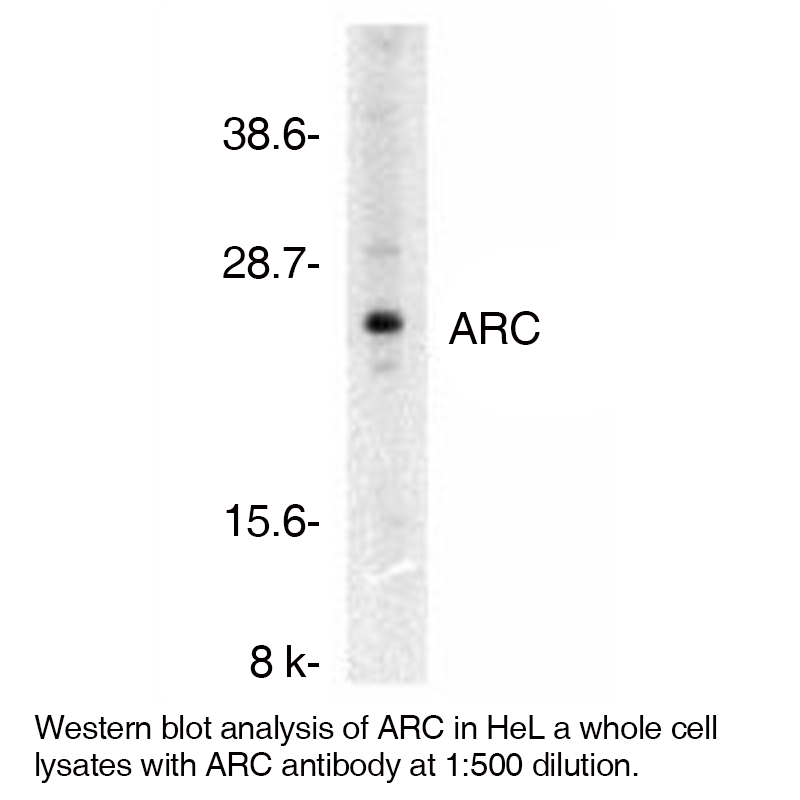Anti-Human Apoptosis Repressor with CARD Domain (NT) (ARC)
Data
- -
- -
Antibody DetailsProduct DetailsReactive Species Human Host Species Rabbit Immunogen PN:A178 Product Concentration 0.5 mg/ml Formulation This polyclonal antibody is formulated in phosphate buffered saline (PBS) pH 7.4 containing 0.02% sodium azide as a preservative. Storage and Handling This polyclonal antibody is stable for at least one week when stored at 2-8°C. For long term storage, aliquot in working volumes without diluting and store at –20°C in a manual defrost freezer. Avoid Repeated Freeze Thaw Cycles. Country of Origin USA Shipping Next Day Ambient RRIDAB_2828055 Each investigator should determine their own optimal working dilution for specific applications. See directions on lot specific datasheets, as information may periodically change. DescriptionDescriptionSpecificity Rabbit Anti-Human Apoptosis Repressor with CARD Domain (ARC) recognizes an epitope near the N-terminus of human, mouse and rat ARC. This polyclonal antibody was purified using affinity chromatography. Background Apoptosis is regulated by death domain (DD) and/or caspase recruitment domain (CARD) containing molecules and a caspase family of proteases. CARD containing cell death regulators include RAIDD, RICK BCL10, Apaf-1, caspase-9, and caspase-2. A novel CARD domain containing protein was recently identified and designated ARC for apoptosis repressor with CARD.1 ARC interacts with caspase-2 and –8 and inhibits enzymatic activity of caspase-8. ARC suppresses apoptosis induced by cell death adapters FADD and TRADD and by cell death receptors Fas, TNFR-1, and DR3. The messenger RNA of ARC is primarily expressed in skeletal muscle and cardiac tissue.1 References & CitationsTechnical ProtocolsCertificate of Analysis |
Related Products
- -
- -



